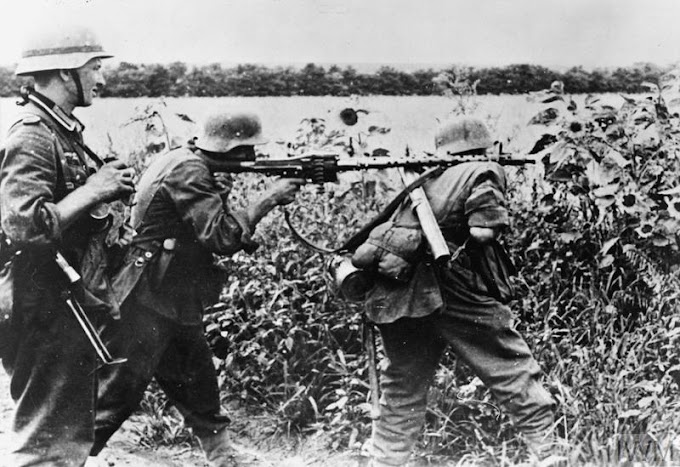By the spring of 1944 Germany had been dominant in western Europe for four years. After defeat in France in 1940 Britain had been too weak to intervene in Europe. In 1942 and 1943 Anglo-American forces concentrated on offensives in North Africa and the Mediterranean, which ruled out a return to northern Europe. But now, with invasion clearly imminent, Germany’s already stretched armed forces faced the prospect of another major front being opened. The outcome would be decisive. In his Führer Directive No. 51, issued on 3 November 1943, Hitler warned of ‘consequences of staggering proportions’ if the western Allies should gain a foothold. His ambition was simple. He would reinforce the western defences, launch a furious counterattack and ‘throw the Allies back into the sea’.
Germany’s air force and navy could do little to resist invasion. The Luftwaffe had withdrawn nearly all its fighters to counter American daylight bombing operations over Germany. The Navy’s warships had been hounded to destruction or were bottled up in ports. Its U-boats would have an almost impossible job penetrating the belt of Allied naval and air defences. The defence of ‘Fortress Europe’ would therefore fall squarely onto the shoulders of the army.
German MG 34 machine gun
A German MG34 team in action. The MG 34 and the later MG 42 were the best light machine guns of the war. Their fast rate of fire - up to 1,500 rounds per minute for the MG 42 - had a devastating effect on advancing Allied infantry.
See object record
France and the Low Countries had long been places where divisions burnt out on the Russian Front were sent to recuperate. The coastline was held by a thin line of garrison troops, from where the fittest and most able had been combed to feed the meat-grinder in the East. However, in accordance with Hitler’s directive, units started to be transferred from other fronts, so that by the end of May 1944 a total of 58 German divisions (out of nearly 300) were positioned in France, Belgium and the Netherlands.
All German armed forces in the West came under Field Marshal Gerd von Rundstedt, as Commander-in-Chief West (Oberbefehlshaber West or OB West). He had two Army Groups under his command – Army Group B in northern France and the Netherlands, and Army Group G in the South of France. Army Group B contained Seventh Army, defending Normandy and Brittany, and Fifteenth Army north of the River Seine. It was commanded by Hitler’s favourite, Field Marshal Erwin Rommel, who enjoyed a level of access to the Führer unavailable to other commanders, including von Rundstedt.
A Captured SS NCO
An SS NCO being searched by a US soldier during Operation 'Cobra'. Waffen-SS formations were regarded as the best German forces in Normandy. Most were deployed in the British sector, but the Americans faced 2nd SS Panzer Division and 17th SS Panzergrenadiers







